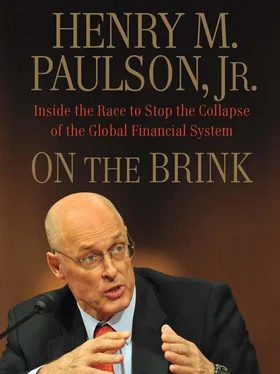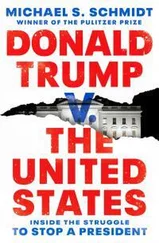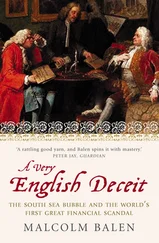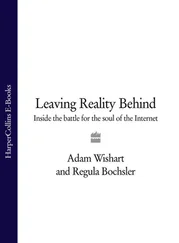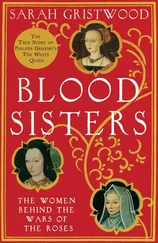My earliest exposure to official Washington came between my first and second years at Harvard Business School. Like all Naval ROTC cadets, I was meant to go on a sea cruise in the summer. Wendy was going to spend the summer after her graduation teaching sailing and swimming in Quantico, Virginia. I was very much in love and wanted to be near her, so I cold-called the office of the secretary of the Navy and ended up talking to a captain named Stansfield Turner, who later became CIA director under President Jimmy Carter. I proposed doing a study on the issue of the ROTC on Ivy League campuses. At the time antiwar protesters were burning down ROTC headquarters at schools across America. Turner agreed, and my sea cruise turned into a berth at the Pentagon. My big achievement that summer was proposing to Wendy and getting married eight weeks later, before beginning my second year of business school. I moved quickly even then!
I finished Harvard the following spring, and we moved to Washington, where I started my first job, also at the Pentagon. I worked for a unit called the Analysis Group, a small team that undertook special projects for an assistant secretary of Defense. It was quite a team. I worked with John Spratt, now chairman of the House Committee on the Budget, and Walt Minnick, who would be elected to the House from Idaho in 2008. Bill George, who later ran Med-tronic, preceded us; Stephen Hadley, President Bush’s national security adviser, followed.
One project—ironic when you consider my tenure at Treasury—involved analyzing the controversial loan guarantee for Lockheed Corporation, the big defense contractor, which had run into trouble developing the L-1011 TriStar commercial jet. John Spratt and I were working directly for deputy Defense secretary David Packard, the legendary co-founder of technology pioneer Hewlett-Packard. Driving to work one day, I was so focused on my first presentation for him that I ran out of gas on the George Washington Parkway. I left my car beside the road and hitched a ride to the Pentagon, only to discover that I’d left my suit coat at home. Spratt scrambled to borrow something that fit me. When I finally got my opportunity to brief Packard about Lockheed, he responded as I would today—with great impatience. He took off his glasses, looked out the window, and twirled them, while I went on and on. He didn’t say anything. Wendy would say I still haven’t learned the lesson. I like others to be brief, but brevity is not one of my virtues.
Packard left Defense in December 1971. Not long after, I landed a spot at the White House on the Domestic Council, which was headed by John Ehrlichman. I joined in April 1972. It was an extraordinary time. The Vietnam War was winding down, but the country remained polarized. The economy was under great strain—Nixon had taken the U.S. off the gold standard the previous year.
I hit the ground running, working on a variety of matters such as tax policy, minority and small-business issues, and the minimum wage. I worked directly for a smart lawyer named Lew Engman, who was a great mentor. When he went off to run the Federal Trade Commission after the 1972 election, I took his place—a big promotion.
In early 1973, I became liaison to the Treasury Department, which was then run by George Shultz. Then the effects of Watergate crashed down on us. I had worked well with Ehrlichman. He was an impressive, dedicated person who cared deeply about policy issues. He gave me good advice, too. I remember him telling me that it was important not only to do the right things, but also to be perceived to be doing them.
Ehrlichman warned me off certain people in the White House, particularly Chuck Colson, the president’s special counsel.
“Nixon is a very complex guy,” Ehrlichman explained before the 1972 election. “He’s got a liberal side to him. That’s Len Garment. He’s got an intellectual side and that’s Henry Kissinger.” But, he went on, Nixon was also paranoid. “He’s never had an election that was easy. He thinks the presidency was stolen from him by the Kennedys in 1960, and that in ’68, if the campaign had lasted a couple more days, he would have lost. So he does not want to go into this election without a derringer strapped to his ankle. And that derringer is Chuck Colson.”
I ended up, of course, being disappointed in Ehrlichman, who served time in prison for perjury, conspiracy, and obstruction of justice; Colson was convicted of obstruction of justice. Seeing men who were one day on top of the world and in jail the next taught me an enduring life lesson: never be awed by title or position. Later, I would frequently caution young professionals never to do something they believed was wrong just because a boss had ordered it.
I didn’t spend a lot of time with Nixon, but I got along fine with him when I did. He liked athletes and enjoyed working with young people. I was not smooth, and I occasionally interrupted him out of eagerness to get my point in, but he didn’t take offense.
When I was getting ready to leave my post in December 1973, I was called in to see the president. I went into the Oval Office, and Nixon and I had a brief chat. I’d had this idea to improve the quality of education by replacing property taxes in inner-city and blighted neighborhoods with a value-added tax, essentially a national sales tax, and using the proceeds to fund a voucher system. “Let me tell you about this VAT,” Nixon said. “I liked the idea, but the reason I didn’t go along with it is because the liberals will say it’s regressive, which it is, but if they ever got their hands on it, they’d love it so much they’d never let it go, because it raises so much money so painlessly it would fund all these Great Society programs.”
The repercussions of Watergate had given me plenty of time to look for a job. I chose Goldman Sachs because I wanted to work in the Midwest, and investment banking would give me the chance to work on a number of different projects at once. Goldman had a strong Chicago presence, and I was impressed by its people: Jim Gorter, the senior partner in Chicago, and Bob Rubin and Steve Friedman, who were young partners in New York. My time in government had taught me that whom you work with is as important as what you do.
Goldman wasn’t on top of the heap then. It was not the leading underwriter or merger adviser that it would become; in fact, it was doing few deals. I spent a year training in New York before being placed in the so-called investment banking services unit: we were a group of generalists who learned all areas of finance and managed client relationships.
After that year, Wendy and I moved to Barrington, and we bought five of my father’s 15 acres from him. Then we each borrowed from our parents to build the house we still call home today. It’s a rustic house, nestled at the edge of a woodland on a hill looking out over a grassland. I cut the path for the driveway with a chain saw, built the retaining walls, and split most of the boulders for our stone fireplace. Wendy, who is mechanically inclined, installed the central vacuum system and built a large play area for the children.
Maybe it was because I was already balding and looked older than my 28 years that Goldman had me calling on clients early in my career, which was unusual. My experience in the White House interacting with Cabinet secretaries and the president gave me the confidence to deal directly with the chief executives of companies. Gorter, who ran Goldman’s Midwest business, was very helpful. He told me that if I were patient and always put the client first, I’d come out ahead in the long run.
He was right, but it was very difficult, and I felt a lot of stress. Before, it had been enough to be smart and work hard—success would follow. Now I also had to convince other people to trust me, and every potential client was already someone else’s. But I worked hard and built a big stable of Midwestern clients. I had to fight doggedly for each one. For example, Sara Lee, then known as Consolidated Foods, was a longtime Morgan Stanley client, but I called on the company with one idea after another, building our relationship through small transactions. Eventually we worked on more significant things. Along the way, I became close to the CEO, John Bryan, an extraordinary man whom I admired as an executive, as well as for his values: he had an active philanthropic life away from the office, and he became a friend and mentor to me. When Goldman went public, I convinced him to join our board of directors.
Читать дальше
